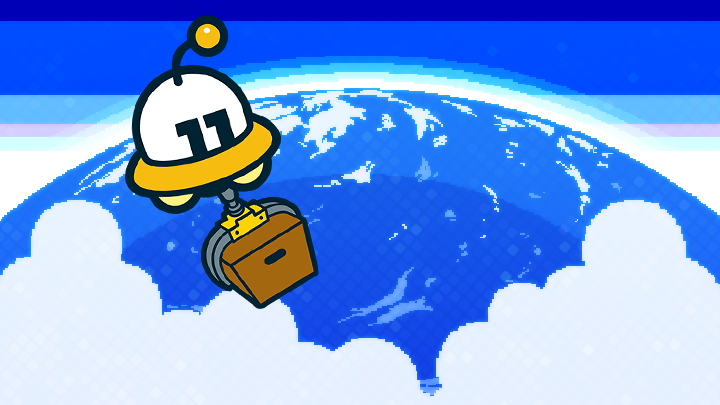This blog was originally posted on the HAL Laboratory blog, a link to the original is here and at the end of the translation. Translation was provided by special guest CraigedyCraig, you can follow him here. Please enjoy this translation but do not repost it in full without both of our permissions.
Congrats! – Part Time UFO Releases on Nintendo Switch Vol. 3
Hello! This is programmer Yuto Nakayama. I was mainly in charge of the UI for the Nintendo Switch version of Part Time UFO. On things like the the stage select and shop screen, please try touching all over the place!

So I’m writing this blog post on October 29th. That’s just after the release of Part Time UFO on switch! Right now I’ve got that fidgety, can’t calm down, just released feeling.
The truth is, because I joined this company in the middle of my career, this is my first project I’ve been deeply involved with HAL Laboratory. As this was a game for consoles, it was the first time I had a game development deadline! Before starting at HAL Laboratory, I was developing smart phone apps. When I first began I thought there wasn’t much difference between smart phone apps and console games, but that’s not the case. I thought I’d write about that topic today.
1. Differences in devices
When you’re developing a smart phone app, you have to make it for different devices. So it’s best for it to work on the majority of those devices. You’ll often hear “it works on this device, but not on this one!” But that’s just something you have to deal with.
With consoles games, you’re basically just dealing with one device. Without having to think about all those different devices (it was okay if we just got it working on one) there was a bit less to do. I was really glad we could use that extra time and spend it improving the feeling of the controls and gameplay.
2. Differences in the debug process
There’s an internal debugging team at HAL Laboratory. I was really surprised as the last company I worked for outsourced the debugging and we had to make do.
At HAL Laboratory, the development team and the debug team progressed closely together. We could keep moving smoothly whenever we needed a sudden bug fix. What’s more, because the development team and the debug team worked together for a long time, it felt really reassuring!
3. Post release differences
For the smart phone version, I’d have to say the production doesn’t really end at release. There’s the so called “admin phase” where you have things like events, tweaking issues, etc.
When you’re developing for a console, although the PR side of the business will keep going post release, you’re basically at the end point. I thought I’d be able to take a moment to catch my breath but… well, really, as I said at the start of this post I can’t stop fidgeting!
4. Differences in initiative
In Part Time UFO, there are a lot of parts in the gameplay and the UI that were made by just the designer. I was surprised they could do so much without the need for a programmer. Thanks to this, the programmers could focus their energy on the more technical parts. It ended up being a nice cycle that increased the quality. You can get a feel for how HAL Laboratory maintains a high level of quality.
It’s not that developing for consoles was better or worse, but it was more different than I had imagined. Throughout I had team members watching out for me, and even though there were things I wasn’t used to, I could be a part of the development team right until the end. From the bottom of heart, I feel such gratitude to the team members who helped me.
The last thing I’ll say is, even though I made it myself, Part Time UFO is really fun! Please go play it!
And see if you can beat my Endless Mode record of 130m!

Source: https://www.hallab.co.jp/blog/detail/2354/
- Featured Content: Smash Ultimate: A CRITICAL Retrospective - March 1, 2024
- Featured Content: How Paper Mario Lost Its Way (Until Recently) - January 31, 2024
- Boyfriend Dungeon – Review - August 30, 2021








